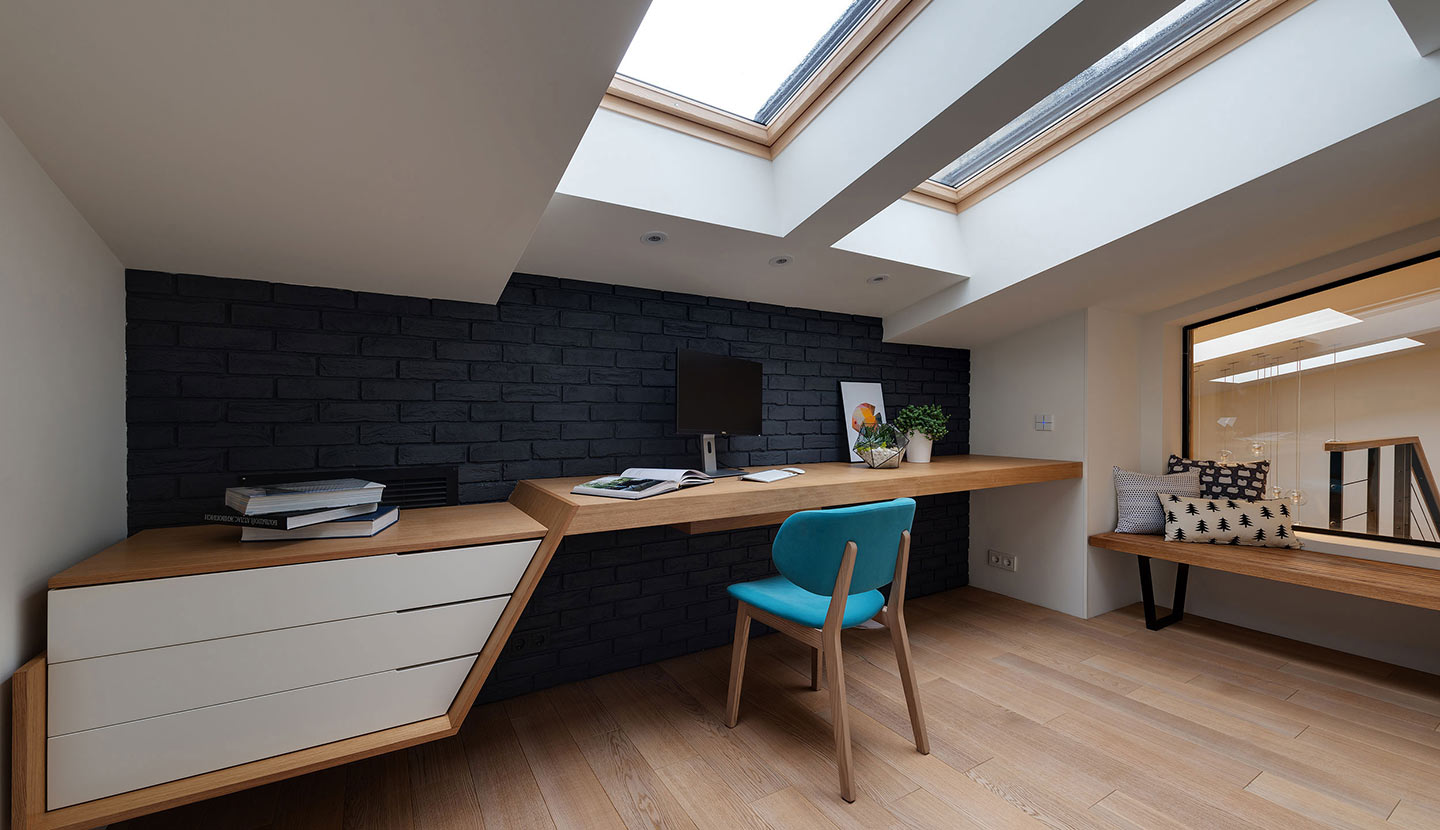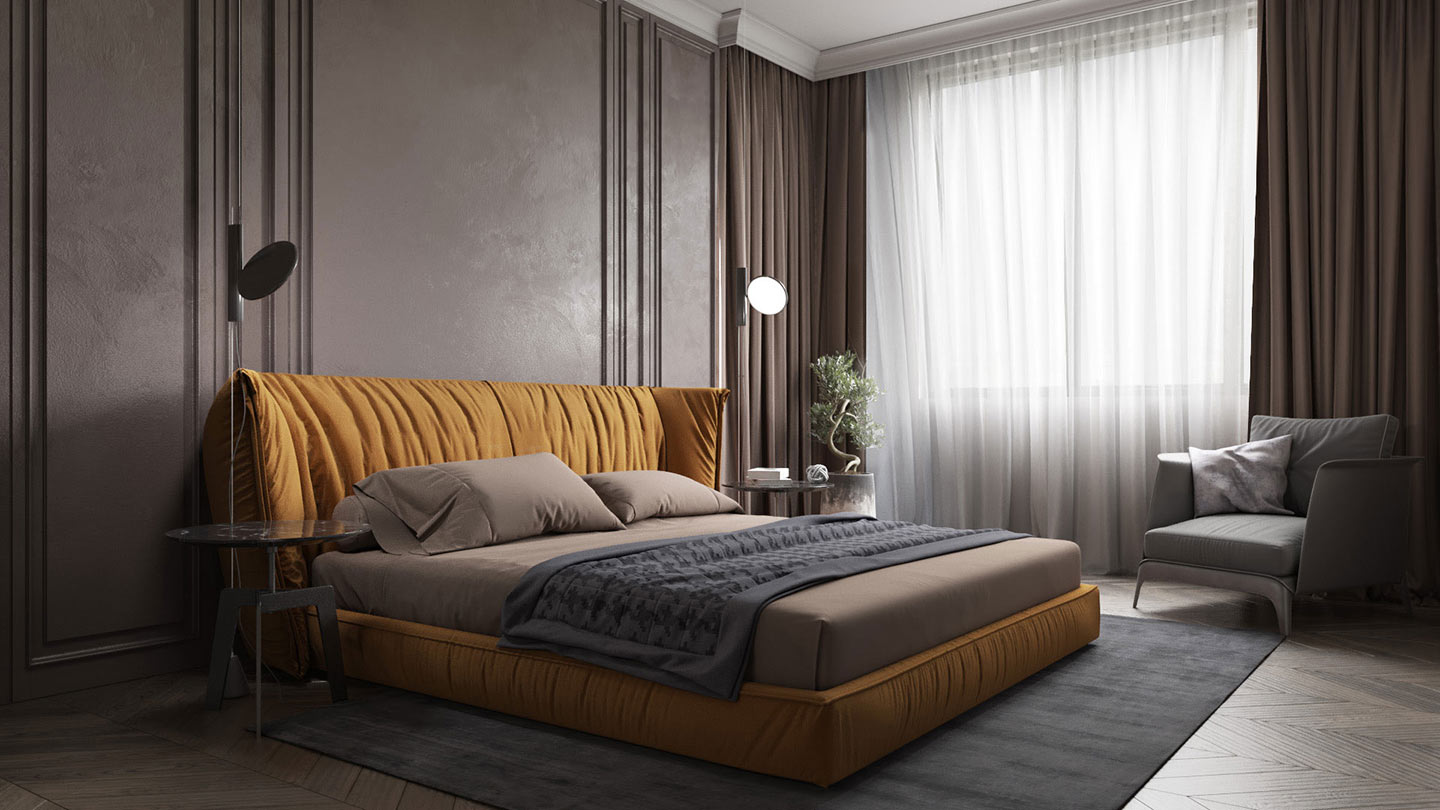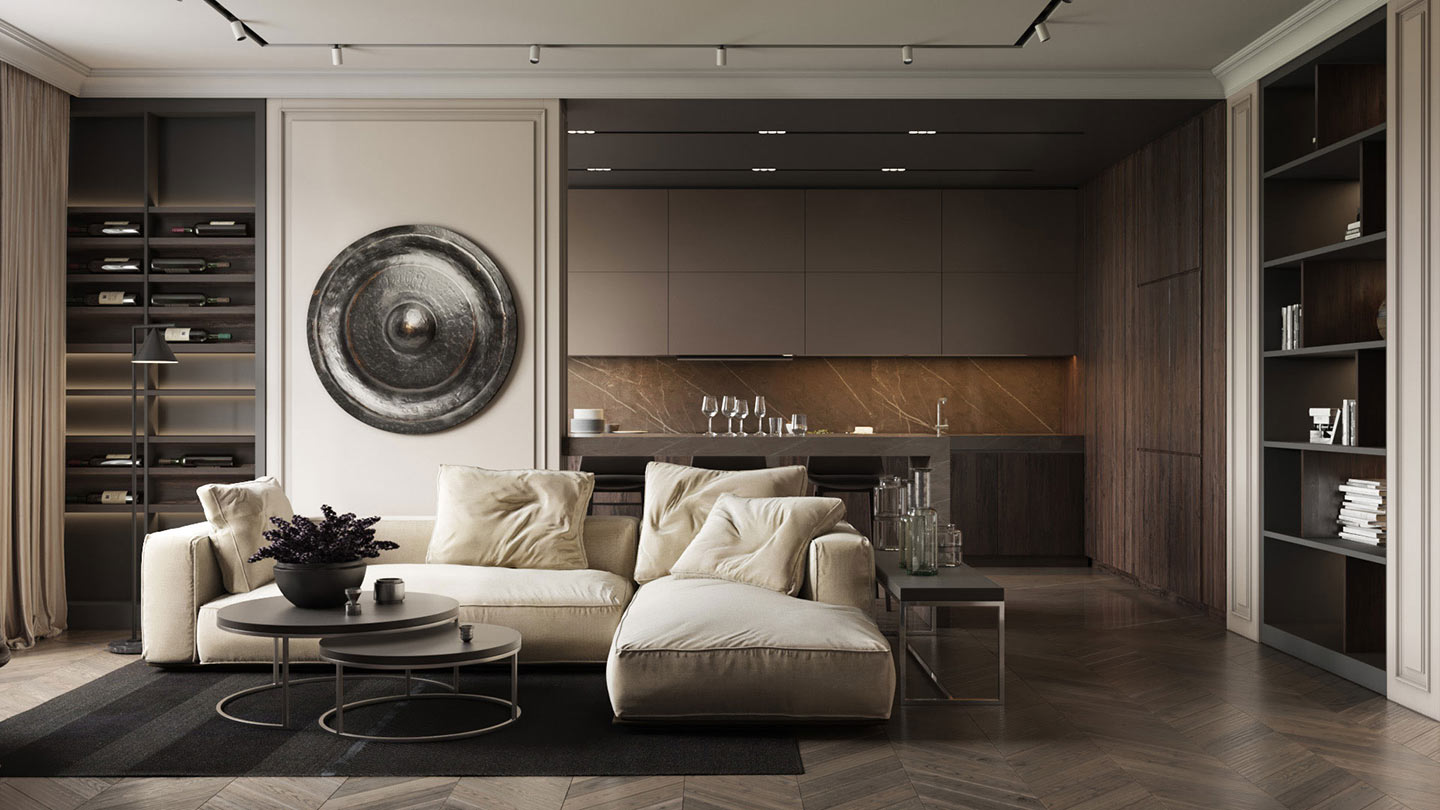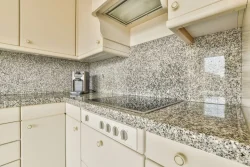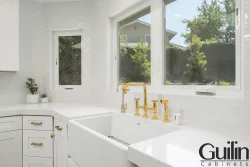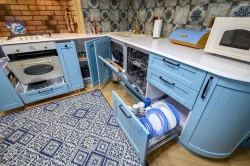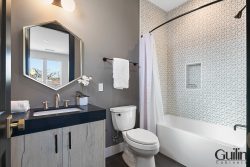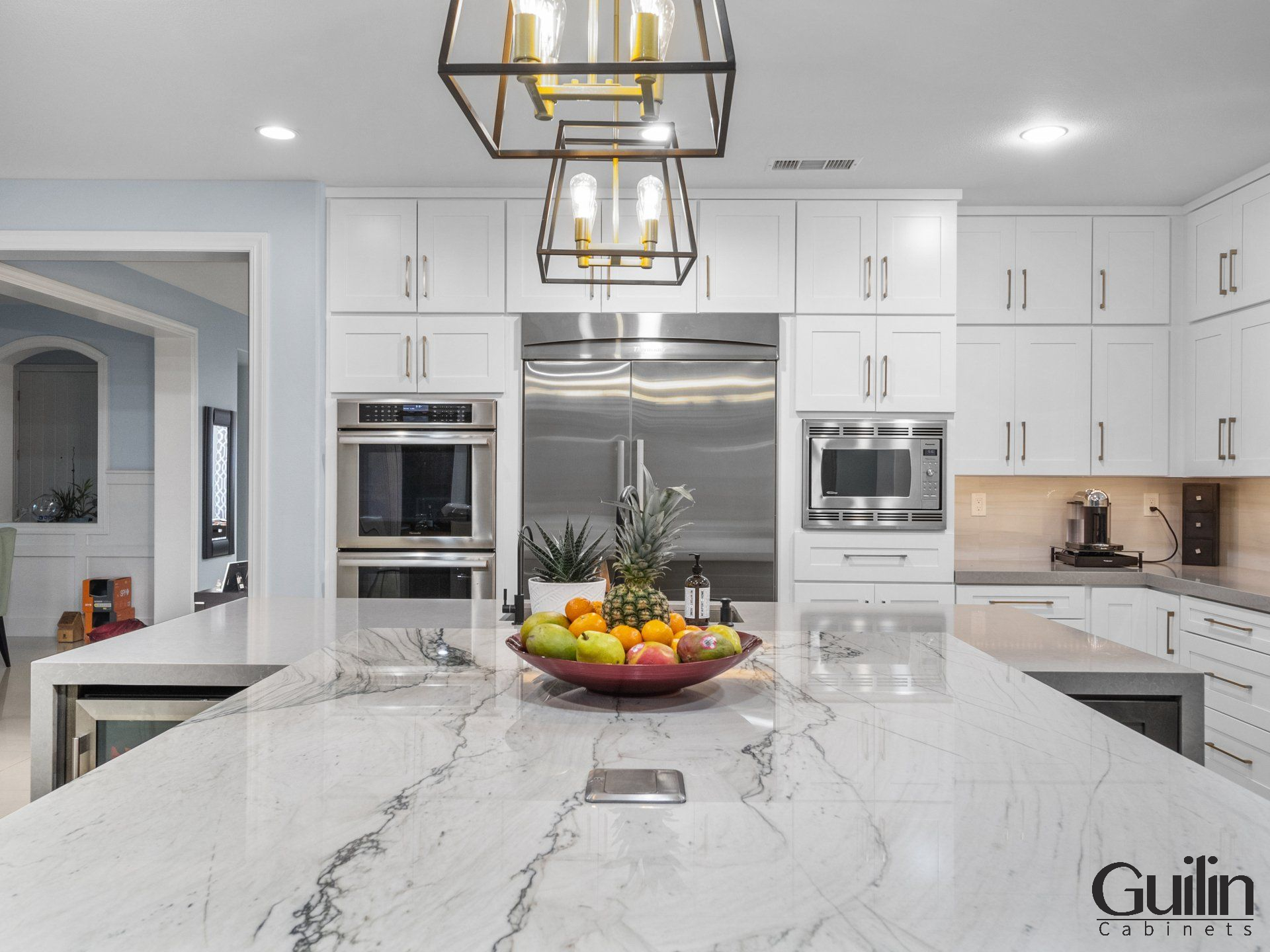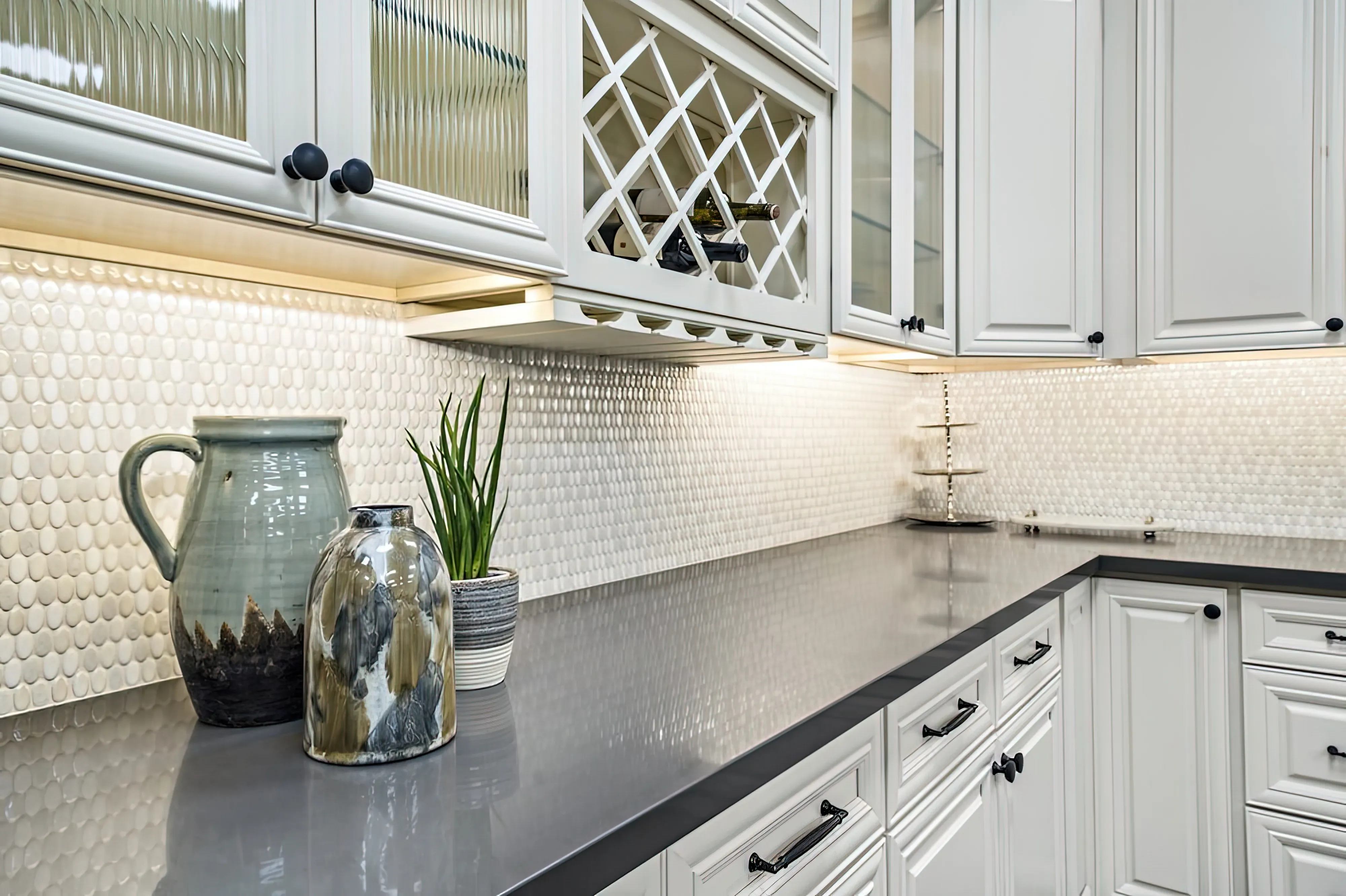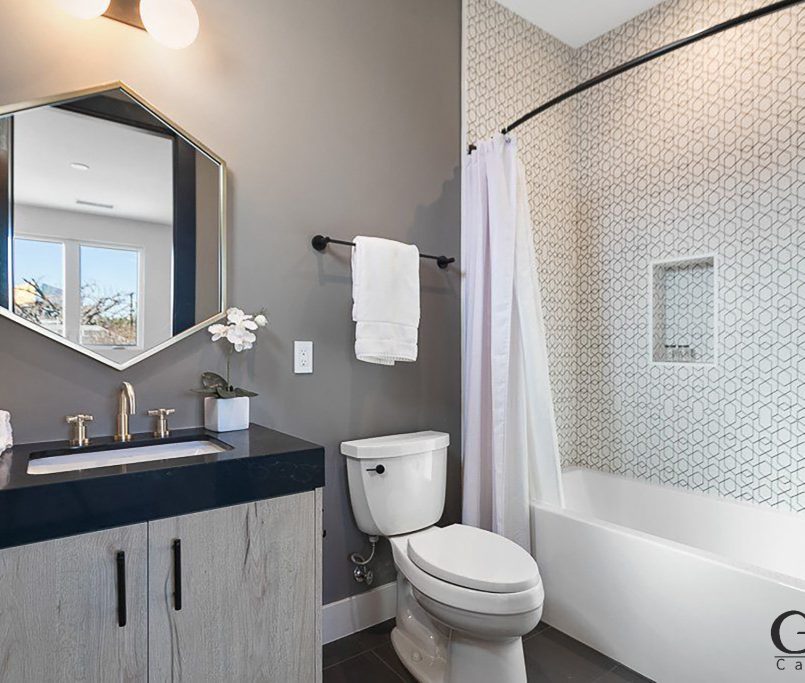The countertops in your kitchen or bathroom have a significant impact on the room’s looks and functioning. Countertops with beveled edges are a popular choice because of the attention to design and functionality they offer. This in-depth tutorial will cover everything you need to know about beveled edge countertops, including how to buy them, how to put them in, how to keep them looking good, and more. Whether you’re a homeowner considering a remodel or a design enthusiast looking for fresh ideas, this article will equip you with the knowledge and insight you need to make a wise choice.
=> Read more: Types Of Countertop Edges – 5 Most Popular
What is a Beveled Edge?
A beveled edge refers to an angled or sloping edge that is typically created by cutting or shaping the edge of a countertop. The bevel is formed by removing material from the edge at a specific angle, usually at a 45-degree angle, although other angles can also be used depending on the desired effect.
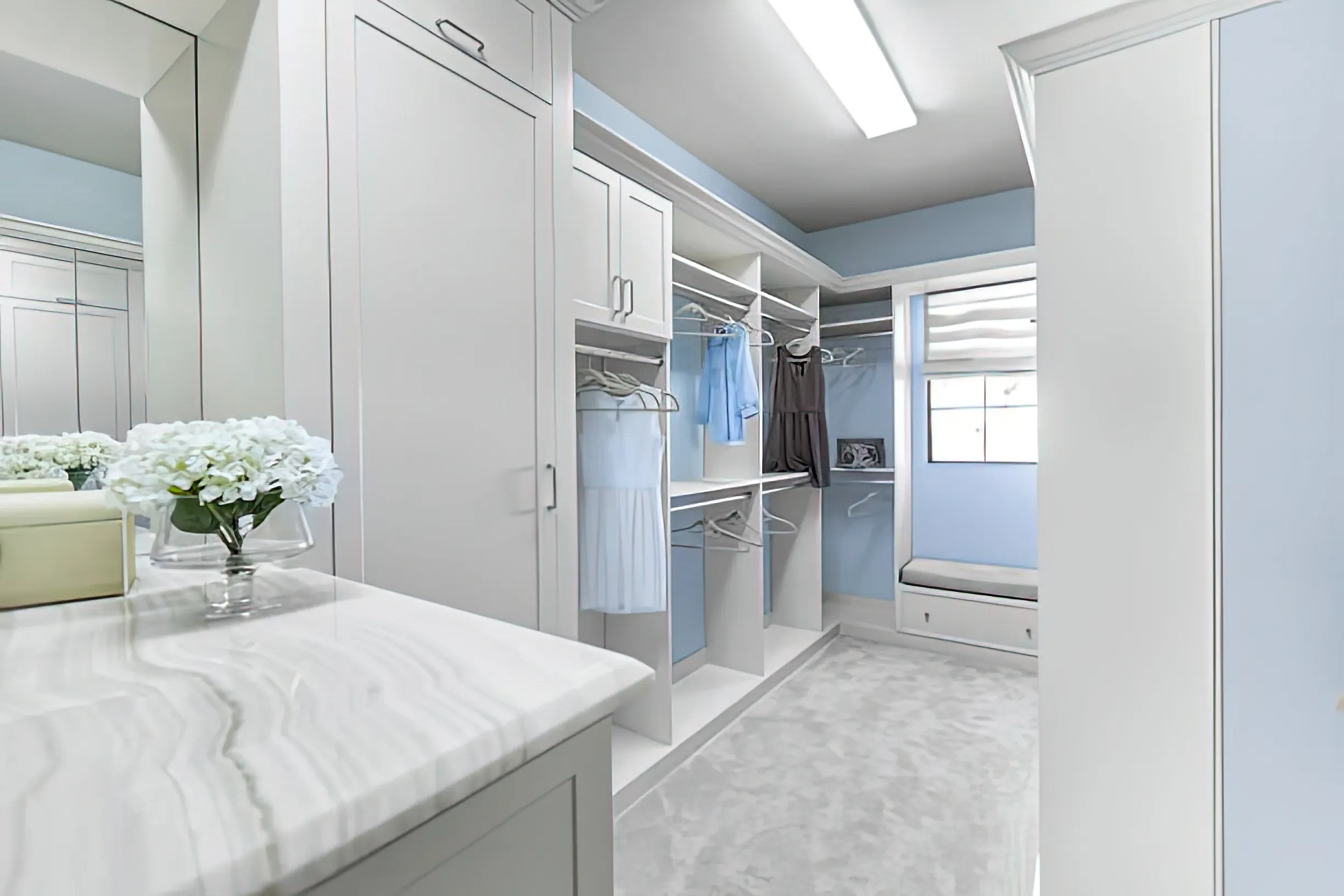 Custom Closets room with Beveled Edges countertop from Guilin Cabinets
Custom Closets room with Beveled Edges countertop from Guilin Cabinets
Types of Beveled Edges
Single Bevel:
This is the most basic type of beveled edge and features a straight bevel cut along the top edge of the countertop. The angle of the bevel is typically around 45 degrees, but it can vary based on personal preference.
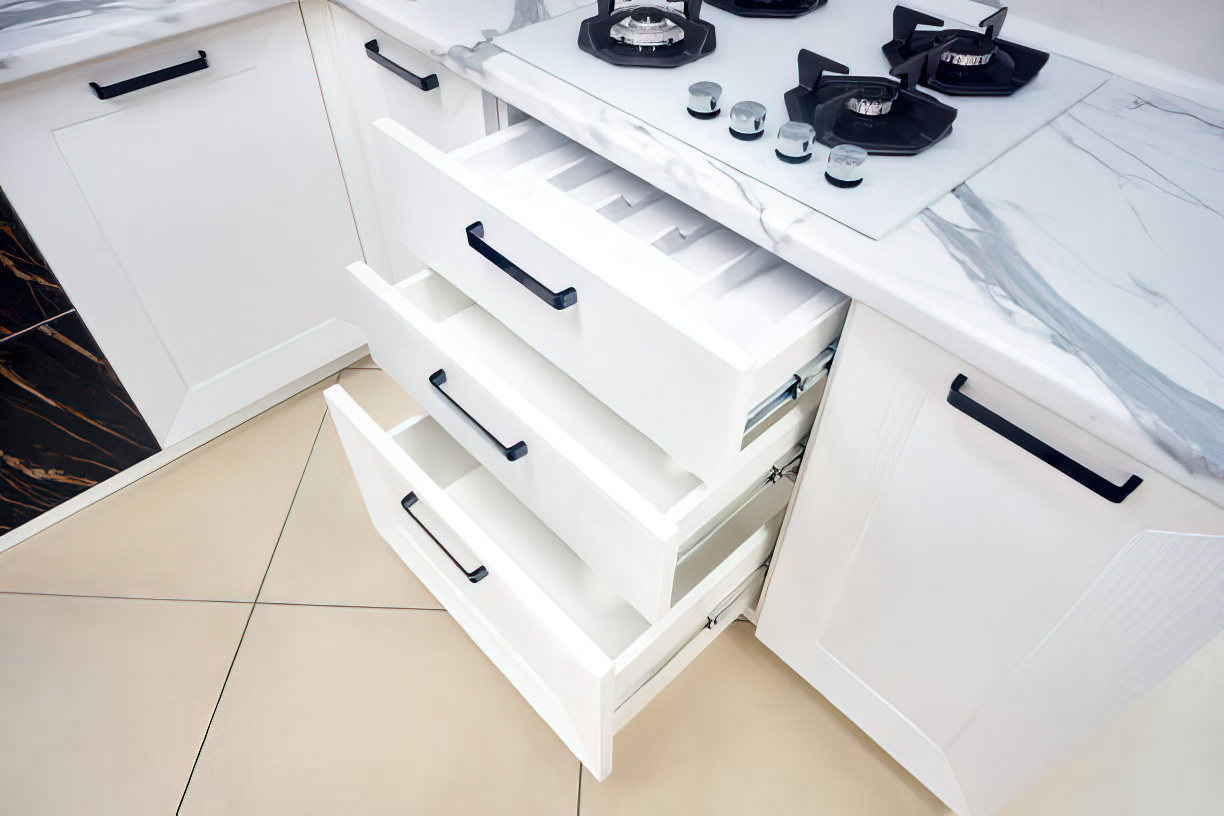
Double Bevel:
As the name suggests, a double bevel edge consists of two angled cuts on both the top and bottom of the countertop. This creates a more pronounced and decorative effect.
Quarter Bevel:
Also known as a demi-bullnose or eased edge, the quarter bevel features a small, subtle bevel along the top edge of the countertop. It provides a softened look while maintaining a clean and simple design.
Half Bullnose:
This edge style is characterized by a semicircular curve on the top edge of the countertop, creating a smooth and rounded profile. It is a popular choice for both traditional and contemporary kitchen designs.
Full Bullnose:
Similar to the half bullnose, the full bullnose edge features a complete, rounded curve on both the top and bottom edges of the countertop. This creates a fully rounded profile, offering a more smooth and seamless appearance.
Dupont Bevel:
The Dupont bevel is a complex edge style that consists of multiple bevels and curves. It typically features a concave curve on the top edge, followed by a small bevel and a convex curve on the bottom edge. This creates an intricate and unique look.
Ogee Bevel:
The ogee bevel is a more intricate and decorative edge style that combines a concave curve on the top edge with a convex curve on the bottom edge. This creates an S-shaped profile, adding a touch of sophistication to the countertop.
Pros of Beveled Countertop Edge
-
Safety: One of the primary advantages of a beveled edge is improved safety. By angling the edge, a bevel helps reduce the risk of injury from sharp or jagged edges. This is particularly important in high-traffic areas like kitchens where accidental bumps and collisions can occur.
-
Durability: Beveled edges can increase the durability of countertops by reducing the risk of chipping or damage along the edges. The bevel acts as a buffer, minimizing the impact of accidental knocks or impacts.
-
Easier Cleaning: The sloping angle of a beveled edge makes it easier to clean countertops as there are no sharp corners or crevices where dirt and debris can accumulate. This simplifies maintenance and ensures a more hygienic surface.
-
Aesthetic Appeal: Beveled edges can add a touch of elegance, sophistication, and visual interest to countertops. They can enhance the overall design and aesthetic appeal of the kitchen or bathroom, providing a more finished and polished look.
Cons of Beveled Countertop Edge
-
Cost: Creating beveled edges requires additional labor and expertise, which can increase the cost of manufacturing or installing countertops. The complexity of the edge design may involve more time and precision, resulting in higher expenses.
-
Thickness Reduction: Beveling the edge of a countertop involves removing material, which can lead to a slight reduction in thickness along the edge. While this reduction may be minimal, it’s worth considering if maintaining a specific thickness is important for your project.
-
Potential for Staining: Depending on the material used for the countertop, the more complex beveled edges may be more prone to staining. The angle of the bevel can make it slightly more challenging to clean and remove stains, requiring extra care and maintenance.
-
Style Limitations: Beveled edges may not be suitable for all design styles. If you prefer a sleek and minimalist look with clean lines, a beveled edge may introduce unnecessary detail and detract from the desired aesthetic.


